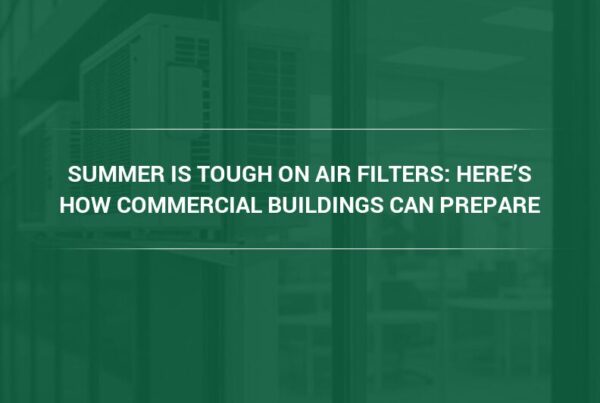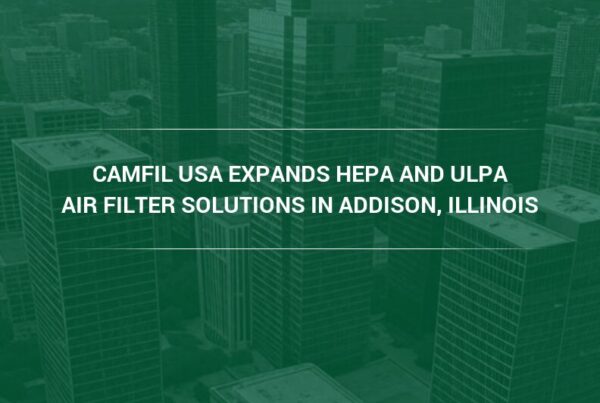The air pollutants that industrial air filters remove from the air can harm the health of animals and plants as well as the health of humans.
When most people think about damage from air pollution, they think of it in terms of its effects on human health. This is understandable, as we’re humans and we filter what we know about the world through our own experiences. Yet it’s important to remember that air pollution negatively affects the entire world around us, which includes plant life and animal life as well.
Animals and plants are damaged by many of the same pollutants that damage human health, and since our ecosystem includes the plants and animals around us, it’s important to look at pollution reduction across the spectrum. After all, reducing the amount of air pollution in the environment doesn’t just benefit us by shielding our lungs from air pollution, it also benefits the animals and plants in our environment, which play a vital role in how we live our daily lives.
Commercial HVAC Air Filters Absorb Toxic Pollutants That Can Harm the Environment
Air pollutants can damage the leaves and roots of plants, and harm animal lungs in much the same manner that they harm human lungs. These pollutants come from a variety of sources: some are natural and some are man-made. It’s important to note, however, that man-made sources are the primary way most air pollutants get into the air.
The air pollutants released by human activity include:
- Chlorofluorocarbons that are released by refrigerants, solvents, and propellants. They wear away at the stratospheric ozone layer, which protects the surface of the Earth from the sun’s ultraviolet radiation.
- Nitrogen oxides and sulfur dioxide that come primarily from the combustion of fossil fuels at industrial facilities, power plants, and by motor vehicles. The pollutants contribute to the acidification of water droplets in the air, which causes acid rain.
- Volatile organic compounds have a variety of human sources, and they are capable of interacting with heat and the chemical energy from the sun to create ground-level ozone.
- Particulate matter is an umbrella term for any small particles of air pollution capable of doing damage to people’s health. Particulate matter is divided into different categories like PM1, PM2.5, and PM10 (these particles are smaller than 1-micron in size, smaller than 2.5-microns in size, and smaller than 10-microns in size respectively).
Commercial HVAC air filters are capable of removing most of these pollutants, but animals living outdoors can’t take advantage of their protective capabilities.
Commercial Air Filtration Systems Prevent The Damaging Health Effects Of Air Pollution
The various air pollutants released by human activity can harm plants and animals in a number of different ways. Acid rain and ozone can harm plants, while particulate matter can damage the lungs of animals. A weaker ozone layer can harm almost all life on the planet.
“The degradation of the ozone layer caused by chlorofluorocarbons means that more ultraviolet radiation hits the surface of the planet, damaging the leaves of plants and harming the skin of animals,” stated Camfil’s Mark Davidson, Manager of Marketing & Technical Materials and ASHRAE member and active committee participant. (1)
Unlike when ozone is in the upper atmosphere, tropospheric ozone is a harmful air pollutant that damages the lung tissue of animals and prevents plants from being able to respire. Since plants can’t respire when in clouds of ozone they can’t photosynthesize as efficiently, meaning they’re unable to grow.
In terms of how air pollution harms the lungs of animals, the lungs of other mammals tend to be similar in construction to the lungs of humans. Particulate matter and ozone air pollution can degrade the cells of the lungs, impacting their ability to supply the body with the oxygen it needs. Ozone and particulate matter can permanently decrease lung function if exposure to the air pollutants is at a high level or exposure continues over a long period of time. The two pollutants can lead to the development or exacerbation of asthma in humans, and to similar respiratory diseases in other animals.
Particulate matter can penetrate into the lungs and bloodstream of humans and other animals, doing substantial damage to the lungs and heart. In humans, exposure to particulate matter can cause stroke, brain damage, ischemic heart disease, and other cardiovascular or respiratory ailments. Particulate matter can also damage the body of animals in other ways.
“There is some evidence that other animals can develop similar ailments to humans,” explains Davidson. “Studies examining dogs from the heavily polluted regions of Mexico City found that the animals displayed forms of neurodegeneration similar to Alzheimer’s disease, not unlike the implications for humans who are continually exposed to air pollution as well.” (2)
The Pollutants Neutralized by Industrial Air Filtration and Ventilation Can Harm Entire Ecosystems
Air pollutants can harm animals and plants in ways other than direct exposure. This is because air pollution can damage ecosystems and lead to global warming.
Acid rain is one-way air pollution can damage an entire ecosystem. It can easily destroy plant leaves, rendering the plants incapable of photosynthesis, which eventually causes them to die off. When the acidic water soaks into the ground it can also damage plant roots, and harm aquatic wildlife living in streams, ponds, and lakes.
Even if the damage caused by air pollution seems small, the die-off of a single species of fish in one pond, for example, can have ripple effects that harm many more animals and plants. Ecosystems depend on a delicate balance of interactions between different species. If one species dies off, it can destabilize an entire food web, leading to an ecosystem collapse.
“Species that play critical roles within an ecosystem are referred to as keystone species because the loss of them makes the entire arch (ecosystem) collapse,” expanded Davidson. “If a keystone species were to be damaged or wiped out by severe air pollution, the rest of the ecosystem would suffer greatly. If an insect cannot breed due to the acidification of the water it normally breeds in, the frogs that feed on it will have less food and can die off themselves.” (3)
Certain kinds of air pollution, like methane and carbon dioxide, also lead to global climate change. Global climate change can cause certain areas of the globe to warm and other areas to cool. The hotter climate is causing desertification of fragile ecosystems, the gradual elimination of vegetation and other forms of life from an area. Global climate change is also causing sea level rise due to the melting of the polar ice caps, causing many biomes and ecosystems near the shore to be flooded and swept out to sea.
Commercial HEPA Air Purifiers Are a Way to Protect Ourselves and Our Domestic Animals
The variety of air pollutants that can harm human and animal health can typically be captured with commercial HEPA air purifiers. HEPA stands for High-Efficiency Particulate Air, and it refers to the fact that the filters used in the purifier can absorb most of the dangerous air pollutants exposed in a home. While wild animals can’t benefit from these devices, domestic house pets and humans can, so it remains vital to use them to defend against damaging air pollutants.
When making purchasing decisions about commercial HEPA air purifiers, look for air purifiers that use replaceable HEPA filters. HEPA filters are capable of absorbing up to 99.97% of all particles of pollution as small as 0.3-microns in size. If you live in a particularly polluted area, you may wish to employ a HEPA air purifier to protect the health of your pet, as well as your own health.
Ecosystems Require Protection Beyond Air Filtration Units
It’s critical to think beyond air filtration units and to develop and sustain pollution control methods that will reduce overall emissions of air pollutants. Pollution control strategies can include regulations by government bodies, investments in clean energy and travel technology, and education about ways to reduce individual emissions of pollutants.
Government bodies have the power to create regulations that will curb emissions. It’s important to place limits on smokestack emissions from industrial facilities, mandate motor vehicle mileage standards, and institute cap and trade programs to incentivize companies to reduce air pollution emissions.
Investing in technology that reduces emissions is another way to improve air quality. Emissions reduction technology includes electrostatic precipitators, smokestack scrubbers, and catalytic converters. Electric vehicles and associated infrastructure like charging stations can also reduce emissions.
“Educational programs can help citizens understand the role they can play in curbing emissions and managing their carbon footprint,” claimed Davidson. “Educational programs can address how citizens can carpool, use public transportation, use energy efficient appliances, make use of environmentally-friendly cleaners, and lower their energy consumption to prevent air pollution.” (4)
Air pollution leads to shorter, unhappier, tougher lives for both animals and humans alike. It’s important to reduce our air pollution emissions where possible and to use commercial or industrial air filters to protect the health of our families and our pets.
Camfil USA is the lead provider of high quality air filters. The health of your family and your pets is paramount, so contact us today to purchase excellent filters from knowledgeable professionals.
Lynne Laake
Camfil USA Air Filters
T: 888.599.6620,
E:Lynne.Laake@camfil.com
F: Friend Camfil USA on Facebook
T: Follow Camfil USA on Twitter
Y: Watch Camfil Videos on YouTube
Sources:
- https://www.windows2universe.org/earth/Atmosphere/wildlife_forests.html
- https://www.pca.state.mn.us/featured/does-air-pollution-affect-our-furry-friends
- http://environ.andrew.cmu.edu/m3/s5/02biodiversity.shtml
- https://www.epa.gov/air-quality-management-process/managing-air-quality-control-strategies-achieve-air-pollution



